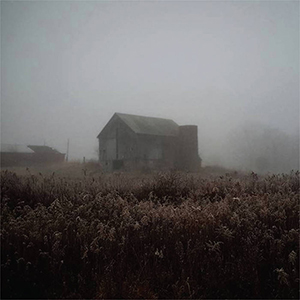High Aura'd, " No River Long Enough Doesn't Contain a Bend"
 Following up an excellent collaboration with Mike Shiflet in 2015, John Kolodij’s latest release as High Aura'd is a further expansion and refinement for his niche carved out in the realm of doomy ambience and electronic experimentation tinged with a hint of folk Americana. Presented as beautifully as it sounds, No River Long Enough Doesn't Contain a Bend is the right balance of familiar and innovative sounds that are combined expertly.
Following up an excellent collaboration with Mike Shiflet in 2015, John Kolodij’s latest release as High Aura'd is a further expansion and refinement for his niche carved out in the realm of doomy ambience and electronic experimentation tinged with a hint of folk Americana. Presented as beautifully as it sounds, No River Long Enough Doesn't Contain a Bend is the right balance of familiar and innovative sounds that are combined expertly.
The first few songs of the album are the ones where it is not hard to hear the influence and commonality with other artists.The brief opener of "Burnt Hills" is a well crafted pairing of fuzzed out and clean acoustic guitar, channeling later period Earth and early Horseback.This continues into "Black Grasshopper," with its rural folksy sound mixed with an approach veering nicely into the world of noise and electronics.It is all well and good, but perhaps a bit too familiar to me.
After this the overt similarities to other projects begin to peel away and Kolodij's own touch is more prominent."Remain in Light," with vocals by Glenna Van Nostrand (albeit heavily processed) is drastically different from its onset.An electronic-centric opening gives a nice digital luster to the open mix, as Kolodij weaves in threads of droning, heavy electronics and squalling guitar.This is a continual process and culminates in a wonderfully dense and weighty conclusion.For "All the Spirits that Dance" he works with a similar technique, building from a sparse opening into a fuzzed out ambient blur that peaks and quickly retreats into an abrupt conclusion.On a song like "Hodge’s Lament," Kolodij transitions the guitar back into focus, but instead of rural acoustic plucking, its in the form of a big doom dirge.The balance is carefully struck between guitar and electronics, and that is exactly what makes it a highpoint of the record, as does the carefully built-up dynamics and mix."Spivey Point" is another bleak masterpiece, lurching on depressive chords and nicely accented by a creepy piano section.
The twangy sound reappears on both "Red West" and "Iridescent Grasshopper," but with a bit more of an idiosyncratic edge.For the former he once again merges the acoustic guitar with its processed, electric counterpart, but the evolving dynamic between quiet and loud is a major asset.On "Iridescent Grasshopper," the additional drumming provided gives it a greater sense of depth and variety.For the concluding "Red Rocks," Kolodij enlists the help of Angel Olsen on vocals and Greg Kelley's trumpet.It continues that funeral atmosphere from "Spivey Point," but that song’s odd open mix and disquieting ambience is fleshed out more with Olsen’s upfront vocals.With that, the trumpet, and more bizarre, less identifiable sounds, the album ends on a particularly spectacular note.
At first listen No River seemed a bit overly familiar, however a further listening (and a deeper one later) revealed the album to be more distinct. While the music may share some general commonalities with other artists, John Kolodij's work is its own beast entirely.His juxtaposition of light and dark tones (through acoustic and electronic instrumentation) through each of these 10 songs makes for a beautifully bleak record.
samples:
 



